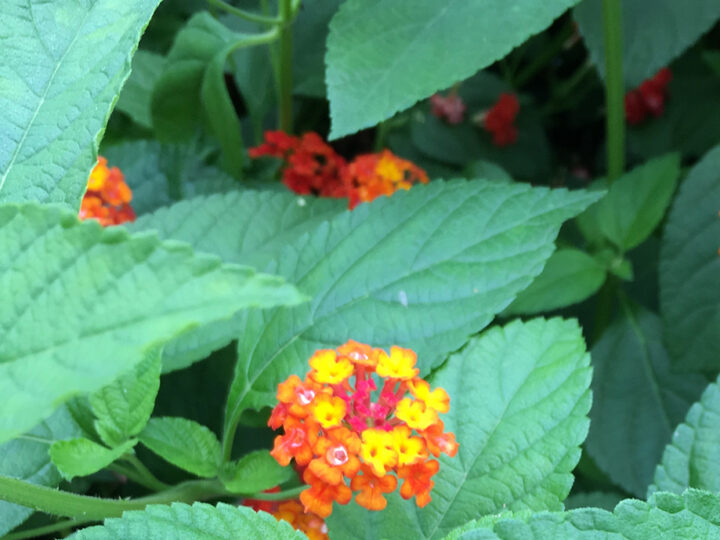Chicory – Cichorium intybus
i grew up thinking chicory was a native plant – it’s pretty ubiquitous along roadsides throughout the North East and into the South. it’s native to Eurasia, in fact, and is cultivated primarily in Europe (and also Nebraska and South Africa). as it turns out, it’s formally considered an invasive in several states, and popularly considered a noxious weed in still others.
i’m sure in some cases it is invasive and does overwhelm and exclude native species from natural habitats.
i personally have seen it growing mostly in artificial settings, though not by human intent, such as by roadsides and along margins of cleared land.
i had my doubts that it would grow at all in Florida, especially South Florida. i tried it anyway, from seed. most that sprouted did not survive. one languished and remained small. two turned into veritable chicory trees that need to be propped up to keep the pathway clear. they produced an abundance of flowers beloved by bees for months on end, well into the warmest days of summer. they didn’t die a natural death, either. i dug them up and dried the roots.
the evidence suggests chicory plants will grow here just fine, once established. and with the benefit of a bit of shade.
but what about self-seeding populations?
this is a frequent follow-up question for me. i like self-sustaining plant populations in my semi-cultivated backyard habitat. for annuals or short-lived perennials, that means self-seeding.
in places to the North where there are winters, Chicory does of course reproduce naturally by seed, maturing in fall and sprouting in spring. it produces a profusion of tiny vase-shaped seeds, in the way of many members of the Aster family, to which it belongs. it didn’t earn its reputation as a ‘noxious weed’ by staying where people put it.
my question regarding a short-lived plant is often this: will it self-seed here, in zone 10a, where there is not a real winter?
the question breaks down into other questions.
doest the generational rhythm of germination, growth and reproduction synch well with local seasonal changes?
or, do the seeds possess the natural wisdom to sprout at the right time of year, without the external constraint of winter?
even if that time of year is the opposite time of year – fall instead of spring!?
and even if external seasonal contraint is heat instead of cold??
or, can a plant survive the summer heat and acheive a mature reproductive state to sow the next generation?
(if the answer to these questions is a collective ‘no’, then seeds need to be saved and sowed at the right time of year – not a deal-breaker, just good knowledge.)

chicory seedlings
i think now would be a good time for Chicory to sprout in this region.
and they are!
do they somehow know?!?
i have wee chicory seedlings popping up in the vicinity of the parent plants and where i sprinkled them several months ago, at the height of summer! they are very cute.
the young greens can be eaten, but i am most excited for the blooms and the roots.
next, we will be learning whether or not chicory can be invasive in South Florida, with my yard being the lab for this experiment. but it seems unlikely. i believe absence of care at the peak of the summer dry spell will murder enough of a chicory generation to hold the population in check. if this wasn’t the case, it would already be all over Florida; there’s no way i’m giving it its first chance at this. it’s worth the little care it requires because it’s nice to have around.
what is my attitude/opinion on invasive plants?
in another post.



